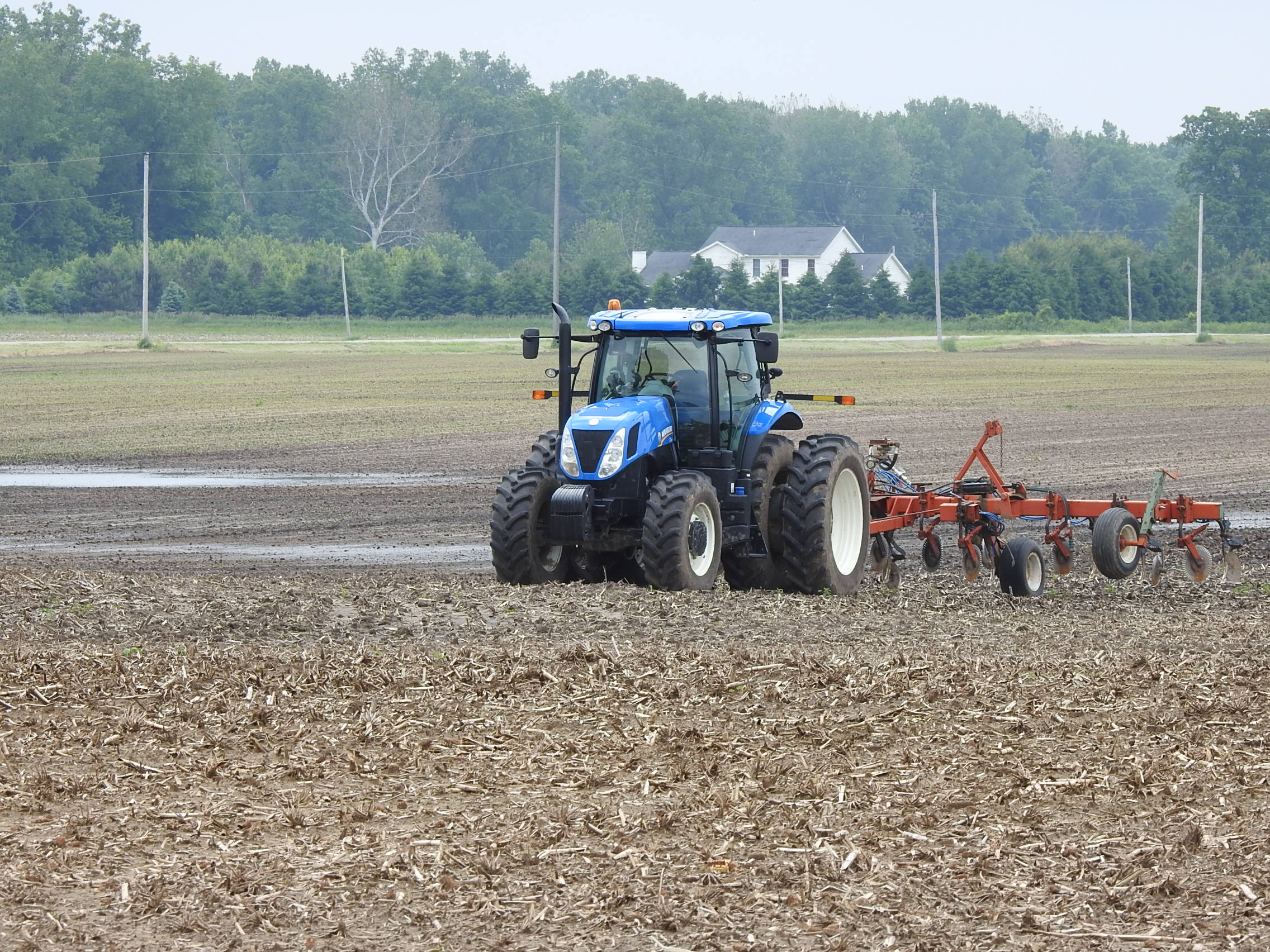
Rain to hamper planting
WAUSEON — Patience.
That’s the take-home message given to area farmers this week by one of Ohio’s more noted climate scientists, Aaron Wilson, while talking about the 2022 planting season at the Fulton County OSU Extension Office in Wauseon.
Mr. Wilson holds a dual appointment as an Ohio State University atmospheric scientist and as a research scientist in OSU’s Byrd Polar & Climate Research Center. He’s also a contributing member of the State Climate Office of Ohio, and an OSU Extension climate scientist who helps educate farmers so they can better adapt their field operations to the region’s changing weather patterns.
Northwest Ohio can expect to be deluged with precipitation — probably more rain than snow — in the coming weeks because of the effects of the La Nina weather pattern in place through at least the end of April, Mr. Wilson said in his talk Tuesday night.
“It could linger into May,” he said.
Area farmers can, as a result, look for less-than-ideal planting conditions again this spring, the unpredictability of which will be exacerbated by more rapid freeze-thaw cycles like the one this week, Mr. Wilson said.
“I’ve been saying ‘patience’ in all of the outlooks this year,” he said. “We’re going to be closer to 2019 than 2021. By that I mean a lot wetter than average, a lot wetter than last year.”
While some parts of America — particularly the West — have become bone dry in recent years, northwest Ohio farmers have been struggling to work in unusually wet, soggy fields — conditions that, according to Mr. Wilson, are wholly consistent with climate change forecasts.
In 2019, fields were so wet across northwest Ohio and other parts of the Midwest that many farmers never planted corn and soybeans and, instead, sought federal crop-insurance payments to help cover their losses.
The National Oceanic and Atmospheric Administration said months ago that data going back to the late 1800s shows the Great Lakes region is getting warmer and wetter. This part of the country is second only to New England for the increasing frequency of intense storms since the 1960s.
Last spring actually turned out to be a mild one for planting. Then, harvesting crops became a problem because of excessive rain that started in late July and continued throughout the fall, creating a double whammy in which many cover crops that were expected to go into the ground could never get planted.
Cover crops are one of the cornerstones of Gov. Mike DeWine’s H2Ohio program to help reduce runoff and, thus, improve western Lake Erie water quality.
Mr. Wilson gave advice to farmers on several ways they should start planning now to make their fields more “weather-resilient.”
“There are certainly weather trends that are making things challenging,” he said.
Weather extremes — not just more rainfall totals — are behind “this change to the whole hydrologic cycle we’re seeing as well,” Mr. Wilson said.
Some NOAA statistics:
● The Toledo area experienced its warmest year on record in 2021.
● Earth’s Top 10 warmest years on record have been since 2005.
● The last seven years have been the top seven warmest on record for the globe. Records show 2021 was the sixth warmest.
● People born after February, 1985, have never experienced a cooler-than-average month in their lifetime.
● Eight of Ohio’s Top 10 wettest years have occurred since 1990, of which six have occurred since 2003.
Jordan Beck, OSU Extension water quality associate for Fulton-Lucas-Williams counties, gave an overview of a number of efficiency improvements, known as best-management practices, being promoted by H2Ohio and other programs.
These include cover crops, two-stage ditches, manure-injection machinery, filter strips, buffers, drainage-control structures, and different types of tillage, Mr. Beck said.
Karen Soubeyrand, spokesman for the local chapter of Citizens’ Climate Lobby, a nonpartisan group promoting cooperation among political parties on meaningful climate legislation, said its members recognize the challenges that farmers face with climate change.
It supports policies that aim to improve agricultural economics while also improving water quality, she said.
Contact Tom Henry at:
on Twitter @ecowriterohio.

